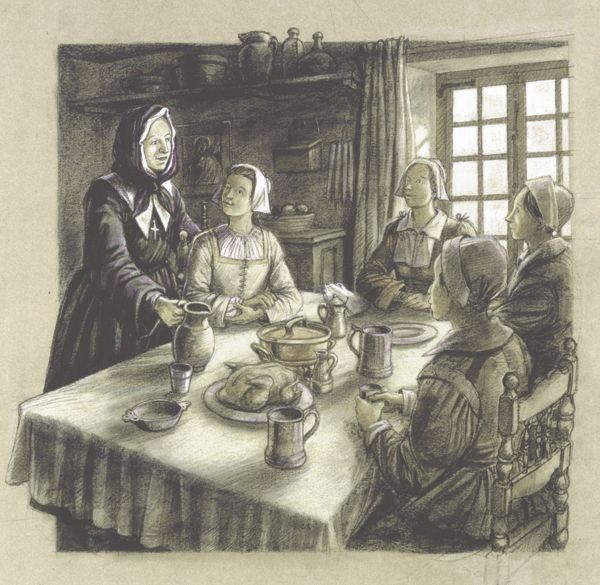Biographies of our 18 Filles du Roi ancestors
What were their hopes, their fears, their motivations? Were they tall or short? Freckled, fair-skinned, or dark? Delicate or rugged? Were they happy in their demeanour, mischievous or outgoing? Or were they mostly serious young women, deeply concerned with the decision they’d made to leave the only lives they had known for such a nebulous future? We will never know.
Note: All illustrations in the Filles biographies are depictions by Lika Kvirikashvili (likaillustrations.com) and do not imply that we have any knowledge of their actual physical appearance.
Like millions of non-noble Europeans in the 17th century, very few of the 768 Filles were literate enough to even sign their names. Newspapers hadn’t yet been invented. Books barely existed. Even rudimentary education was afforded only to Europe’s elite. Had that not been true, we might have been left with diaries or occasional notes that survived to provide more personal details about the lives of the Filles du Roi. The only glimmer of hope might be that their children or grandchildren were able to write about them and that those writings will turn up in modern times. But that's not likely.
While I’ve done my very best to report on their lives, there is no guarantee that my information is error-free, especially with dates and places. So with that caveat, here are the short biographies I've created of those heroic females who made the journey from France as Filles du Roi and whose blood became our own. If you have a copy of the larger family tree, you can use the information I have gathered in each biography to locate the generations that ultimately led to the family of Lazare and Clarice Côté.

Marguerite Bourgeoys was a French nun and founder of the Congregation of Notre Dame of Montreal in the colony of New France, now part of Québec. Among many other historic achievements, she is frequently cited as a pivotal figure in the Filles du Roi story because she provided shelter and support for the women upon their arrival.


















